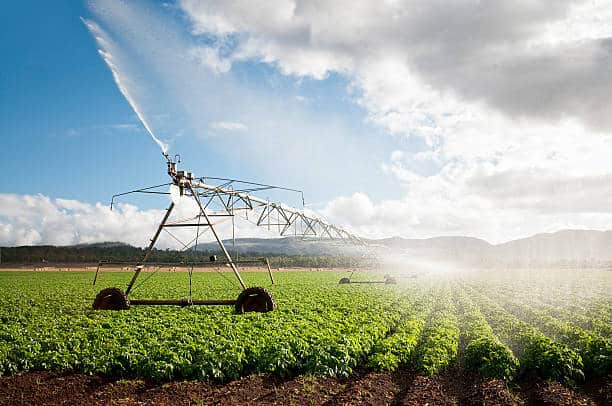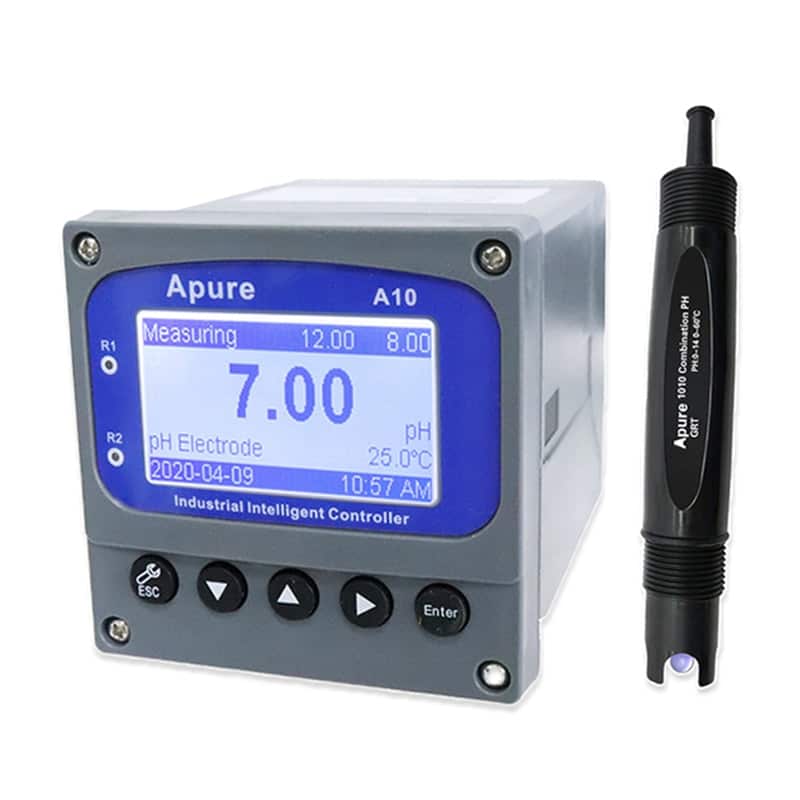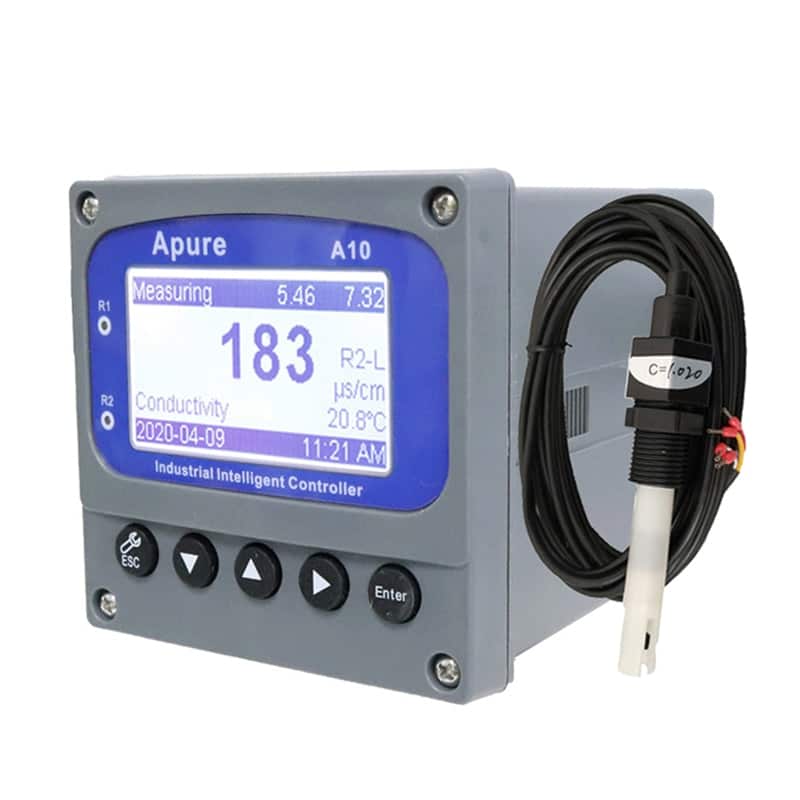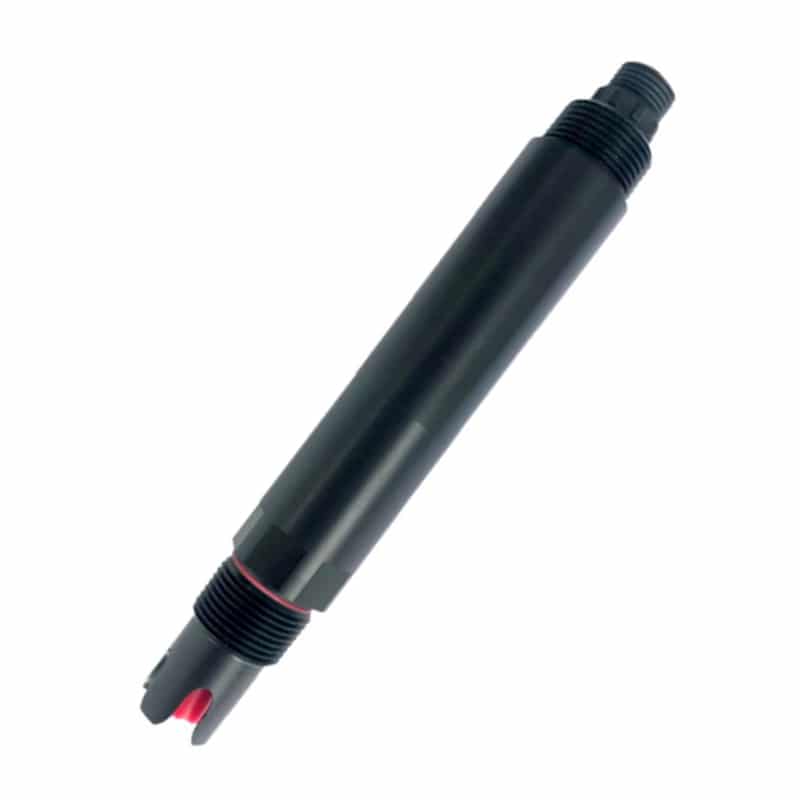What is agricultural uses of water?
Water is vital to agriculture and plays a key role in crop production and animal husbandry. The uses of water in agriculture can be categorized into the following key areas:
- Irrigation
The most important use of water in agriculture is irrigation, by supplying water to crops to ensure their growth and productivity. Irrigation systems can be categorized into different types including drip, sprinkler and flood irrigation. - Water for domestic animals
Livestock such as cattle, poultry and pigs require drinking water to maintain their health and water intake, and an adequate water supply is essential for livestock production. - Crop cooling
In hot climates, water is sometimes used for crop cooling, using techniques such as evaporative cooling to prevent heat stress on plants. - Frost protection
During the cold season, water may be applied to the crop to form a protective ice layer to protect the crop from frost damage. - Soil moisture management
Soil moisture is critical to plant growth and water is applied as needed to maintain optimal soil moisture levels for the crop. - Hydroponics and aquaculture
Hydroponic and aquaculture systems use water as the primary medium for plant growth. In hydroponics, plants are grown in nutrient-rich water, while in aquaculture, fish farming is combined with hydroponics to form a symbiotic system. - Pesticide and fertilizer application
Water is commonly used as a medium for the application of pesticides and fertilizers to ensure even distribution and effective pest and nutrient management. - Cleaning and sanitation
Water is used in agriculture for the cleaning of equipment, facilities and vehicles to help maintain hygiene and prevent the spread of disease. - Seedbed preparation
Water is used in seed bed preparation, especially in rice cultivation where fields are initially soaked to establish the crop. - Livestock cooling and sanitation
Water can be used for cooling and sanitation in livestock operations, including cooling animals with sprinklers or misters during hot weather and cleaning pens and equipment. - Aquaculture
Aquaculture involves the cultivation of fish and other aquatic organisms and relies heavily on water for animal habitat, feeding, and waste management. - Specialty crop cultivation
Some specialty crops, such as cranberries and blueberries, require specific water management practices, such as soaking fields at specific growth stages or at harvest.

Where does water for agriculture come from?
- Groundwater: Groundwater is a water resource extracted from underground aquifers through wells or boreholes. Groundwater is commonly used for irrigation and to supply livestock. It is a stable source of water, but over-abstraction of groundwater can lead to declining water tables and water quality problems.
- Surface water: Surface water includes water bodies such as rivers, lakes, reservoirs and canals. These water sources are commonly used for irrigation and drinking water for livestock, especially in riverine areas. The availability of surface water is affected by seasonal variations and climatic conditions.
- Precipitation: Precipitation is a natural water resource that can be used to meet agricultural water needs through rain and snow. Farmers can collect and store rainwater for subsequent use, which is particularly important in some arid areas.
- Irrigation water channels: In some areas, irrigation canals and diversion systems have been built to transport water from rivers or reservoirs to farmland. These canals are usually designed to provide rationed water resources to meet agricultural needs.
- Wells and ponds: Wells or ponds may be constructed on farms for storing and providing water. These sources are usually used for livestock watering and short-term irrigation.
- Reclaimed water: In some areas, treated municipal sewage or industrial wastewater is used to supply water for agriculture. This usually requires a high degree of treatment and purification to ensure that the water quality meets agricultural needs.
- Cisterns: Some farms have built cisterns to store rainwater or irrigation water. These ponds are usually used for small-scale agricultural production.
- Surface runoff: Rainwater flows through agricultural land and is absorbed by plants before entering groundwater or surface water. This is a natural way of supplying water.
Does this water need to be treated?
- Groundwater: Typically, groundwater is of high quality and therefore does not require extensive treatment. However, if high concentrations of salts, iron, manganese or other contaminants are present in groundwater, moderate water quality treatment may be required.
- Surface water: The quality of surface water can vary depending on the source and the surrounding environment. In some cases, surface water requires treatment processes such as purification, filtration or disinfection to ensure that it meets sanitary and quality standards for agricultural water.
- Precipitation: Rainwater is usually a relatively clean source of water, but measures should be taken to minimize contamination, such as cleaning roofs and collection systems, before collecting and storing rainwater.
- Irrigation water canals: Irrigation water canals are often used to transport water to farmland, but before water flows over long distances or over multiple farm fields, water quality treatment may need to be considered to prevent sediment or microorganisms in the water from adversely affecting the irrigation system.
- Reclaimed water: treated municipal sewage or industrial wastewater often requires advanced treatment to ensure it meets sanitary standards for agricultural water. The use of this water source is usually subject to regulatory and supervisory oversight.
- Wells and ponds: Wells and ponds may require regular maintenance and cleaning to ensure sanitary and quality water. Water quality problems may arise from algae growth, contaminant buildup, or plant and animal activity.
- Cisterns: Cisterns are often used to store stormwater, which itself is usually relatively clean. However, cisterns may need to be protected from pollutants, for example to avoid leaves or substrate entering the cistern.
Why monitor the agriculture of water?
- Ensure the health of crops and livestock: Monitoring water quality ensures that the water supplied to crops and livestock is safe and fit for purpose. Poor water quality can lead to plant diseases, growth problems and livestock health issues.
- Improve the quality of agricultural products: Good water quality helps to produce high quality agricultural products. Contaminants in water can negatively affect produce, including affecting taste, color and food safety.
- Increase agricultural productivity: Monitoring and managing water quality can help farmers use water more efficiently, avoid waste, and improve the efficiency of irrigation. This helps to reduce production costs and increase agricultural yields.
- Reducing environmental pollution: competent water quality management can help reduce pollution of the surrounding environment from agricultural activities. Avoiding pollutants from entering water bodies protects nearby rivers, lakes and groundwater and maintains ecological balance.
- Compliance with regulations and standards: Many countries and regions have established regulations and standards for water quality, and agricultural activities must comply with these regulations. Monitoring water quality helps to ensure that farms meet these regulations and avoid potential legal problems.
- Sustainable water management: Water is a finite resource and therefore needs to be managed carefully. Monitoring water quality can help farmers and government agencies understand the sustainability of water resources and take steps to protect and maintain water bodies.
- Disaster prevention: Monitoring water quality helps in early detection of signs of water pollution or degradation of water quality, which in turn helps in taking corrective measures to prevent disasters from occurring, such as the spread of diseases or salinization of agricultural land.
How do you monitor agricultural water use?
Water quality monitoring
Water sample collection: water samples are collected regularly, from locations such as irrigated farmland, livestock drinking water sources, wells, ponds, and irrigation water channels.
Laboratory analysis: Water samples are sent to qualified laboratories for water quality analysis. Laboratory testing can detect a variety of contaminants in the water, such as dissolved oxygen, salinity, nitrogen, phosphorus, trace elements and organic matter.
Field testing: Some water quality parameters can be tested in the field, such as pH, electrical conductivity (EC) and temperature. Field test kits and instruments are usually portable and easy to use.
Remote monitoring: Some monitoring stations may be equipped with remote monitoring equipment that monitors water quality parameters in real time and transmits the data to a centralized database. This can help to identify water quality problems in a timely manner.
Water quantity monitoring
Flow meters: Flow meters are installed in irrigation systems or canals to measure water flow and distribution. Flow meters can help determine the efficiency of water use.
Water level measurement: Monitor changes in water levels in wells, ponds, and cisterns to see how water is being supplied.
Precipitation monitoring: recording the amount and distribution of precipitation in order to understand the impact of precipitation on agricultural activities.
Water distribution and management
Irrigation scheduling: develop irrigation schedules to determine when, where and how much water to irrigate individual crops. This helps to avoid wasting water.
Water registration: Record the use of water resources on the farm, including records of maintenance and operation of wells, ponds and irrigation systems.
Sustainable management: Adopt sustainable water management practices to ensure the long-term availability of water resources.
Data recording and reporting
Create a database: Record all water quality and quantity data in a database for long-term tracking and analysis.
Generate reports: Regular water quality and quantity reports are generated to summarize data and provide insights on water use.
Compliance and regulatory compliance
Comply with local, national, and international regulations to ensure that agricultural water use activities comply with regulations and standards for water quality and quantity.
Education and training
Train and educate farmers and agricultural practitioners on how to properly monitor and manage agricultural water use to improve water sustainability and productivity.
Range of standards for water quality monitoring of agricultural water use
| Water Quality Parameter | Standard Range | Impacts/Issues When Out of Range |
| pH Value(A10 Aquarium ORP pH Controller) | 6.0 – 8.5 | Low pH may lead to soil acidification, affecting nutrient uptake by plants. High pH may result in soil alkalization, limiting the growth of certain plants. |
| Dissolved Oxygen (A10 Optical Dissolved Oxygen Meter) | 5 – 14 | Low DO levels can lead to oxygen deficiency in water, impacting aquatic life survival. High DO levels may indicate water eutrophication, leading to excessive algae growth. |
| Total Phosphorus | 0.1 – 2.0 | Excessive total phosphorus can cause water bodies to become eutrophic, promoting excessive algae growth. Insufficient total phosphorus levels may result in inadequate nutrient supply to plants. |


| EC Category | EC Range(A10 EC Electrical Conductivity Meter) | Applicable Crops and Soil Types |
| Low EC | Typically < 1.0 mS/cm | Suitable for crops highly sensitive to salinity, e.g., strawberries and certain fruit trees. |
| Medium EC | 1.0 – 3.0 mS/cm | Suitable for most vegetables, wheat, soybeans, and general crops. |
| High EC | > 3.0 mS/cm | May be applicable to salt-tolerant crops or certain halophytes. |

Nitrate-Nitrogen (NO3-N)
| NO3-N Category | NO3-N Range(NO3-201 Digital Nitrate Nitrogen Sensor) | Applicable Crops and Soil Types |
| Low NO3-N | Typically < 10 mg/kg | Suitable for crops highly sensitive to nitrate levels. |
| Medium NO3-N | 10 – 50 mg/kg | Suitable for most vegetables, wheat, soybeans, and general crops. |
| High NO3-N | > 50 mg/kg | May be applicable to some large crops and halophytes. |

Ammonium-Nitrogen (NH4-N)
| NH4-N Category | NH4-N Range(NHN Online Ammonia Nitrogen Sensor) | Applicable Crops and Soil Types |
| Low NH4-N | Typically < 2 mg/kg | Suitable for crops highly sensitive to ammonium levels. |
| Medium NH4-N | 2 – 10 mg/kg | Suitable for most vegetables, rice, and general crops. |
| High NH4-N | > 10 mg/kg | High NH4-N concentration may have adverse effects on plant health. |

Where is iron, manganese, zinc and copper used in agricultural water?
Iron, manganese, zinc and copper are micronutrients that are important for plant growth and health in moderate amounts. These micronutrients are usually present in the soil in trace amounts, but in some cases they may need to be supplemented by fertilizers or soil amendments to ensure proper crop growth. The following are common applications of these micronutrients in agriculture:
Iron (Fe)
Iron is an essential component of chlorophyll(CHLO-206A Digital Chlorophyll Sensor can be used.), which plays a key role in the formation and synthesis of chlorophyll in plants.
Iron is important for chlorophyll synthesis, photosynthesis and nitrogen metabolism in plants.
Iron deficiency may result in yellowing of leaves, affecting plant growth and yield.
Standard range:
Deficient: less than 4 mg/kg
Low: 4 – 20 mg/kg
Moderate: 20 – 100 mg/kg
Adequate: 100 – 500 mg/kg
Excess: greater than 500 mg/kg
Manganese (Mn)
Manganese is a component of several enzymes in plants and is involved in a variety of metabolic reactions, including nitrogen metabolism and photosynthesis.
Manganese contributes to healthy plant growth, especially in acidic soils.
Manganese deficiency may result in yellowing of leaves and affect plant health.
Standard range:
Deficient: less than 10 mg/kg
Low: 10 – 20 mg/kg
Moderate: 20 – 50 mg/kg
Adequate: 50 – 200 mg/kg
Excess: greater than 200 mg/kg
Zinc (Zn)
Zinc is critical to plant growth and metabolism, especially playing an important role in enzyme activity in plants.
Zinc contributes to root development, flower and fruit formation, and disease resistance in plants.
Zinc deficiency may result in poor plant growth and reduced yields.
Standard range:
Deficient: less than 0.5 mg/kg
Low: 0.5 – 1.0 mg/kg
Moderate: 1.0 – 2.5 mg/kg
Adequate: 2.5 – 5.0 mg/kg
Excess: >5.0 mg/kg
Copper (Cu)
Copper is a co-trace element in plants that plays a role in the activity of several enzymes, such as peroxidase.
Copper aids in the growth of plant roots and stems, as well as catalyzing a number of metabolic reactions.
Copper deficiency may result in greenish and distorted plant leaves.
Standard range:
Deficient: less than 0.2 mg/kg
Low: 0.2 – 0.4 mg/kg
Moderate: 0.4 – 0.8 mg/kg
Adequate: 0.8 – 2.0 mg/kg
Excess: greater than 2.0 mg/kg
These micronutrients are commonly added to the soil in agriculture in the form of fertilizers to meet the specific needs of different plants. Deficiencies or excesses of micronutrients can negatively affect plant health, so ensuring that the right amount of micronutrients are available in the soil is a critical part of agricultural management. Different types of crops may have slightly different needs for these micronutrients, so the decision to add micronutrient fertilizers needs to be based on the needs of the specific crop and the results of a soil analysis.
These standardized ranges of micronutrients help farmers and agricultural professionals to determine the levels of micronutrients in the soil so that necessary steps can be taken to correct deficiencies or excesses. Soil testing and analysis is a critical step in determining soil micronutrient levels to ensure that plants are getting enough micronutrients to promote healthy plant growth and high crop yields. These standard ranges can be adapted to specific agricultural programs and geographic locations to meet the needs of particular plants.
Does agricultural water contain blue-green algae?
Agricultural water may contain blue-green algae, but their presence and abundance usually depend on the source of the water body and management practices. Blue-green algae are a group of microorganisms usually found as algae in natural water bodies such as lakes, rivers, ponds and reservoirs. They multiply rapidly under suitable environmental conditions (e.g., warm water temperatures and highly nutrient-rich water bodies).
In agriculture, the following conditions can lead to problems with blue-green algae in agricultural water:
- Agricultural drainage: Agricultural drainage can carry nutrients (e.g., nitrogen and phosphorus) into nearby water bodies, which can promote the growth of blue-green algae. Excessive nutrient runoff into water bodies may lead to eutrophication, which can stimulate blue-green algal blooms.
- Irrigation water sources: If the source of irrigation water contains excessive amounts of nutrients, such as water from a river or reservoir, these nutrients may enter the farmland during the irrigation process. If blue-green algae are present in the water source, they may be carried along with it to the farmland.
- Agricultural ponds or cisterns: Ponds or cisterns are used in some agricultural systems to store irrigation water or to provide drinking water for livestock. Blue-green algae may colonize these water bodies if they are exposed to excessive nutrients and sunlight.
The presence of blue-green algae may cause problems because some blue-green algae produce toxins that are harmful to human and animal health. In addition, overgrowth of blue-green algae may lead to eutrophication of water bodies, increased oxygen depletion in water bodies, and degradation of water quality.
To prevent blue-green algae problems, there are a number of measures that agricultural managers can take, including managing nutrient runoff from agricultural fields, regularly inspecting and cleaning irrigation facilities, maintaining the water quality of water sources used for agricultural purposes, and adopting water-quality improvement measures when necessary. Monitoring the quality of water bodies and taking preventive measures are important steps in ensuring the quality of water used for agriculture. Accurately monitor blue-green algae with the BGA-206A Blue Green Algae Sensor.
Where does agricultural water end up?
Agricultural water can end up being discharged to different locations, depending on the agricultural system and drainage management practices. The following are some of the main locations where agricultural water may end up being discharged to:
- Groundwater: A portion of agricultural water use may infiltrate into the soil and end up in the aquifer. This can occur through irrigation, rainfall or drainage. Groundwater is commonly used to recharge groundwater resources such as wells, springs and rivers.
- Rivers and streams: excess water from farm drainage and agricultural water may enter nearby rivers, streams, or creeks through drainage systems. These bodies of water eventually flow into a larger network of rivers or lakes.
- Lakes and reservoirs: In some cases, agricultural drainage water may be channeled into man-made reservoirs or lakes. These bodies of water are typically used for irrigation, farm drainage, livestock watering, or other agricultural purposes.
- Ponds and impoundments: ponds and impoundments in agricultural systems are used for storage of irrigation water, livestock drinking water, or fish ponds, among other purposes. These bodies of water usually serve as storage and supply points for agricultural water in the short term.
- Soil evaporation and evapotranspiration: a portion of agricultural water is eventually returned to the atmosphere through the processes of evaporation and evapotranspiration. This occurs when water on the surface of soil and vegetation is evaporated by solar heat or when plants release water into the air through transpiration.
- Treatment facilities: In some cases, agricultural drainage water may need to go through a water treatment facility to remove pollutants and nutrients before it can be reintroduced into a water body or used to recirculate the agricultural system.
- Subsurface drainage systems: Some agricultural lands have subsurface drainage systems that are used to remove excess groundwater to maintain soil moisture and reduce salt(SAL Water Digital Salinity Sensor) concentrations in the water.
- Reuse: In some agricultural systems, agricultural water can be recycled and reused, such as recycling irrigation water and reusing it for irrigation to minimize water waste.

The location of final discharge of water for agriculture is usually influenced by geographic location, land use, water management policies and agricultural practices. Maintaining good water quality and sustainable water management are important for both agriculture and the environment.
Summary
Water for agriculture is a vital resource in agricultural production, covering a number of key areas such as irrigation, livestock watering, farm management, equipment cleaning, and produce preservation. This diversity of uses is essential to ensure the health and production of crops and livestock. However, with water scarcity and environmental concerns on the rise, sustainable water management is becoming increasingly important in agriculture to increase efficiency and reduce waste while minimizing adverse environmental impacts. Water management and conservation in agriculture is an important part of ensuring food security and sustainable agricultural production.
Apure offers water quality analyzers, flow meters, level measurement, pressure measurement, temperature measurement and ozone generators that can help farmers monitor and manage water quality, use water more efficiently, avoid waste, and improve the efficiency of irrigation. Feel free to contact us.
